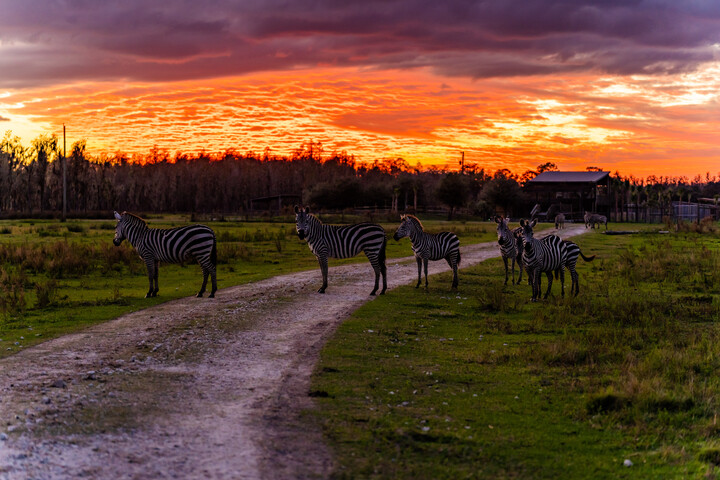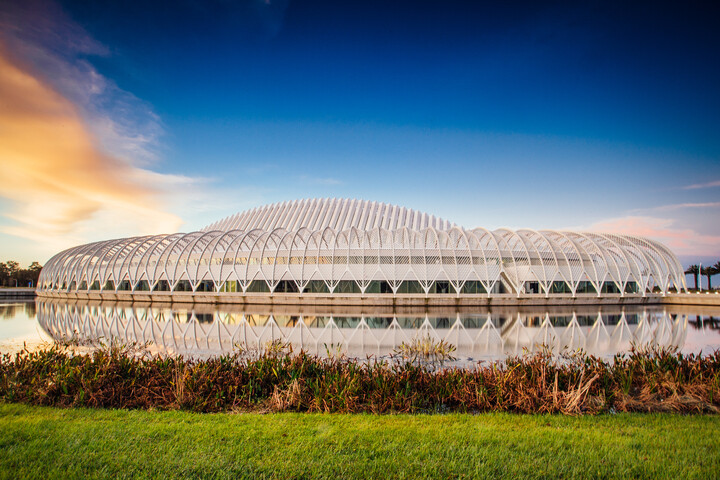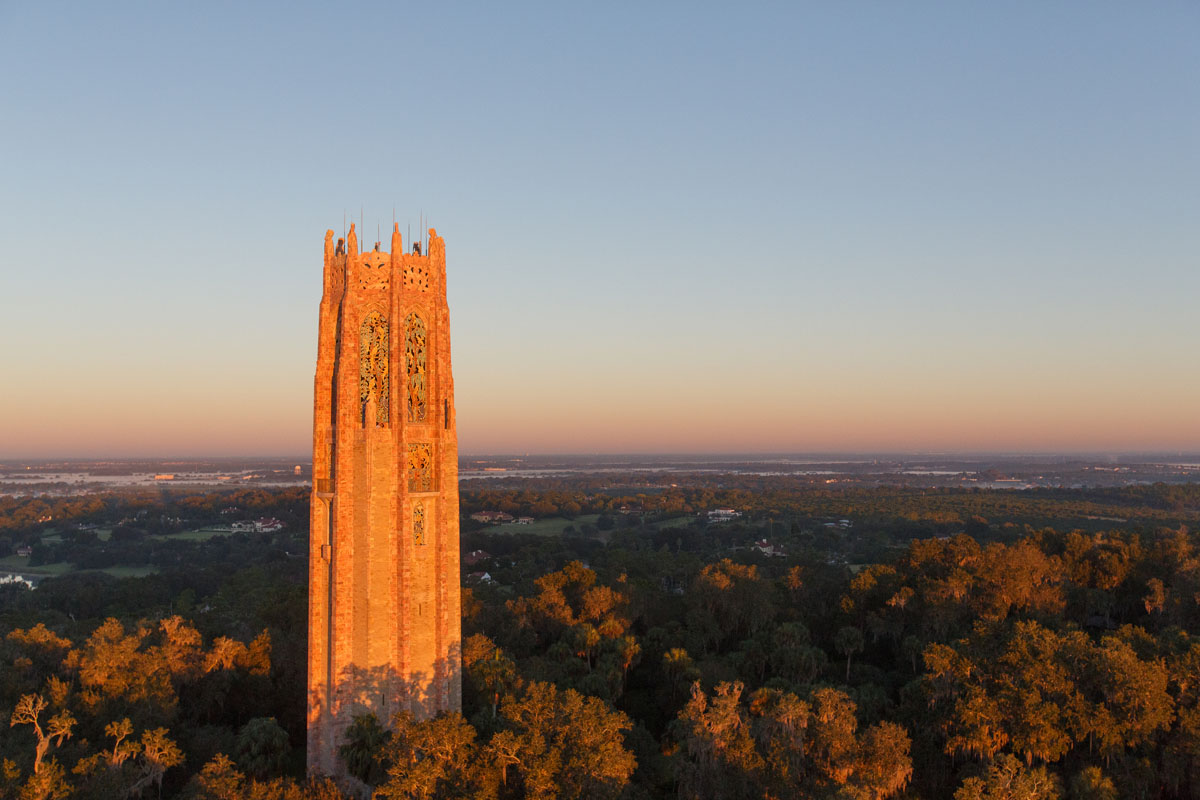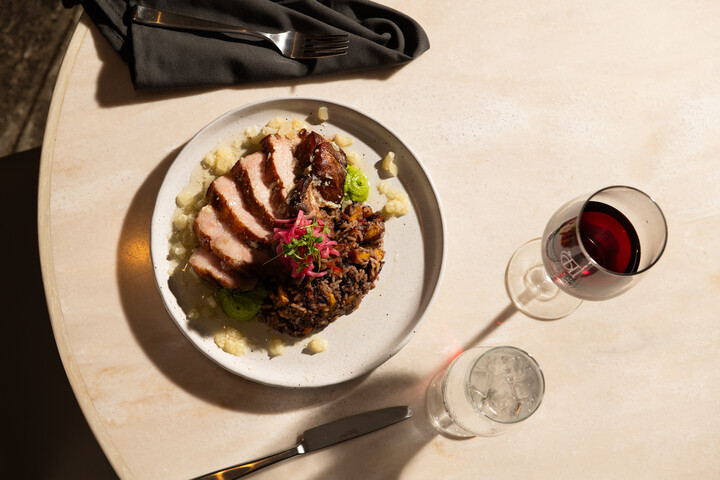Blessed with nearly 1,400 miles of coastline, when it comes to a Florida vacation, the first thing on most minds is sun and surf. But the Sunshine State is so much more. Just a few miles inland from your typical, sun-and-surf stay, you’ll find the real Florida. Small towns and welcoming venues await your discovery. A place where you can visit one of the best nature preserves in the nation in the morning and take an open-air safari suitable for the African plains that afternoon. Or, if you’d rather, you could enjoy breathtaking, cutting edge architecture, visit a fabled singing tower, or enjoy haute cuisine – all within a half hour of each other. Welcome to Central Florida’s Polk County, where you enjoy the best of the Sunshine State while leaving the rest behind.
Reptilian Rock Stars

If the state’s most popular reptile is on your must-see list, the world renowned Circle B Bar Reserve, often listed as one of the top nature reserves in the United States, is the place. Comprised of nearly 1,300 acres, Circle B may be the top spot in the nation to observe alligators in the wild. While there are numerous trails, the most popular one, without a doubt, is Alligator Alley.
Running along alligator-inhabited Lake Hancock, Alligator Alley allows for the viewing of the state’s saurian stars at a safe distance from shore or from a number of piers. Ranging in size from mere inches to nearly as long as your average hatchback car, alligators are at home in the oak hammock, freshwater marsh, hardwood swamp and the lakeshore that make up the reserve.
With all the alligators around, it’s the perfect place to bring a camera or smartphone – but don’t miss out on everything else around you. Circle B Bar Reserve, with a series of well-maintained, marked trails of different lengths, provides countless opportunities for photographers or painters looking to capture the beauty of nature, especially the large variety of wading birds, waterfowl, ospreys and bald eagles.
No matter your fitness level – or how hot it is – there is a trail that will be just the right length for you. The extensive trail system includes the Shady Oak Trail (2 Kilometers), Lost Bridge Trail (0.8 Kilometer); Alligator Alley (1.6 Kilometers); Marsh Rabbit Run (1.1 Kilometers); Heron Hideout (0.8 Kilometers), Eagle Roost (1.1 Kilometers), Wading Bird Way (1.1 Kilometers), Windmill Whisper (.64 Kilometers) and the Otter Trail (.32 Kilometers). Many of the trails interconnect to provide longer hiking opportunities. While bicycles are welcome, pets, understandably, are not.
A bit of Africa in Central Florida

Tucked away down a winding road seemingly in the middle of nowhere, scrub pine and palmettos transform into wide open spaces, where the fairly flat topography and miles of lush fields are only broken up by the occasional bush or tree. This isn’t the sand-and-surf that most think of as Florida. This is “cracker country,” so-named after the distinctive sound the Spanish vaqueros whips would make when herding cattle in 19th century Florida.
Today, it is the perfect veld-like setting for Safari Wilderness, an African safari type experience. Here, cattle roam: only it is Watusi, the African version of the longhorn, known by their distinctive upright horns that can reach eight feet in length.
Opened in 2012, the ranch – a 260-acre expanse – is not a zoo. Here, the animals roam freely, grazing and interacting with each other much like they would at home in Africa or Asia. Eland – spiral-horned antelopes – water buffalo and zebra mingle while lemurs dance away on an island in the middle of it all. There are even breeds here that you can no longer find in Africa, such as the scimitar-horned oryx. Extinct where they originated, this type of antelope thrives in game farms around the United States.
Visitors have their choice of excursion types –safari bus, all-terrain vehicle safari, kayak safari, camel expedition and a seasonal sunset safari. Or opt to stay in your own vehicle for a guided drive thru safari for SUV sized vehicles or smaller – motorcycles or commercial vehicles are not allowed.
Most visitors opt for the safari bus, which offers the most shade from Florida’s intense sun and allows up-close encounters with wildlife from the safety of the vehicle. Many animals simply walk up to the bus, seemingly as interested to look at those on-board as the passengers are to look at the wildlife.
However, don’t discount the other options. On the kayak safari, you’ll navigate through freshwater areas which lend themselves to close-up encounters with wetland species such as Defassa waterbuck and red lechwe. Mid-way through the kayak safari, visitors navigate to the lemur island, where they can hand feed grapes to two different species of lemurs.
There is also an interactive cheetah encounter, where professional cheetah keepers take you through the daily animal care routine, up close. Not available to drive-thru safari goes, this activity is by special request and reservation only.
New to Safari Wilderness is the glamping option, where intrepid guests can camp overnight in one of 10 safari tents on property. It’s a perfect way to continue your adventure after a sundowner safari. Each tent sits on its own mobile wooden deck and allows access to the Welcome Barn, where there are showers, restrooms and even a second story game viewing area.
Cutting-edge architecture

Rising up from the flat terrain outside of Lakeland – and just minutes from Safari Wilderness – is an architectural feat unlike any other in the Southeastern United States. Welcome to the grounds of Florida Polytechnic University and its signature Innovation, Science and Technology Building designed by famed architect Santiago Calatrava. Featuring arched pergolas and operable louvers, the shape of the building actually changes during the day as the moving louvers keep the students below in the shade.
Considered a working piece of avant-garde architecture, the complex houses Florida’s only state university focused on science, technology, engineering and mathematics. A few of Calatrava’s other works include the World Trade Center Transportation Hub, the Oculus, in New York City, Garde de Oriente in Portugal, Reggio Emilia AV Mediopadana in Italy and the Museu do Amanha in Brazil, as well as the under construction Greenwich Peninsula project in London.
The Innovation, Science and Technology Building earned more than 20 architectural and engineering awards. For visitors, the white arcs and lines contrast nicely against Central Florida’s typical blue skies and the reflect waters near the building, making the grounds one of the most photographed – and Instagramed – locations in the area.
The grand dame of Central Florida

Speaking of pictures, perhaps luscious gardens and sweeping vistas are more your style. If so, visit Lake Wales’ world-famous 205-foot art deco and neo-Gothic legend, Bok Tower. Built upon one of the highest elevations in peninsular Florida, guests can stroll in the shadow of the tower that houses a carillon – an instrument comprised of a series of bells played by a keyboard.
Listed on the National Register of Historic Places, Bok Tower Gardens is the lasting work of Edward Bok, a Dutch immigrant. Bok, a journalist by trade, won the Pulitzer Prize in 1920 for his autobiography. Before that, Bok rose to fame and influence as the editor of “The Ladies’ Home Journal,” which, under his leadership, became the first magazine in the world with one million subscribers.
The Boks commissioned Frederick Law Olmsted Jr. – the son of the man who designed Central Park in New York City – to design the gardens while architect Milton B. Medary designed the tower. Opening more than five years later, Bok Tower Gardens were dedicated by then President Calvin Coolidge in 1929. Built on Iron Mountain, what was once a desolate sand hill was transformed into a 250-acre lush tropical landscape that is both a contemplative garden as well as a bird sanctuary.
A recent addition to the grounds is Hammock Hollow Children’s Garden, 2.7 acres of childhood delight featuring water areas, bridges, tunnels and an indigo snake sculptured sand box. Not far away are areas for kids to climb logs, an out-door stage area, art and music zones, and even a working hand-pumped well.
Also on the grounds is the recently re-opened enchanting 20-room Mediterranean-style mansion, “El Retiro.” A visit transports you back in time to the 1930s, when the home was built for Charles Austin Buck, a Bethlehem Steel executive. To preserve this architectural, cultural, and historic landmark, El Retiro was added to the National Register of Historic Places in 1985.
A taste of the world

Food, unlike anything else, expresses cultural identity. In Central Florida’s Polk County, that identity might be a little confusing.
When it comes to food, Polk County defies labels. Sure, you’ll find barbecue and Southern cooking as well as Mexican and Italian cuisine. If you are looking for mash-ups and cultural callbacks – as well as one of the top-10 best restaurants in the state – there’s a place for you.
In the heart of walkable downtown Lakeland, you’ll find Nineteen61, a chef’s culinary love letter to his heritage. Is the cuisine Cuban, Latin, Spanish or Peruvian? Honestly, you won’t care about a label when it comes to your table. From ceviche to Spanish salads, Cuban standards such as ropa vieja and Peruvian style Chinese fried rice – arroz chaufa – this culinary mash-up has been considered one of the top-10 Spanish restaurants in the state since the day the doors opened.
A second generation Cuban-American, the name comes from the year the parents of owner and operator Chef Marcos Fernandez fled Cuba. Some of the dishes – Peruvian yuca fries or Lima-inspired empanadas – are based on Fernandez’s own creativity while others – the Arroz con Pollo or flat-iron steak – are comfort food recipes learned at home.
Open for both lunch and dinner, locals get here early and take advantage of the tapas menu at the bar before dinner. Calamari fritos – rings and tentacles tossed in jalapeno caramel – as well as the seared brisket Poutine Cubano and the ever popular empanadas are among the favorites. They also have an extensive wine and spirits selection, including signature cocktails and even mocktails.
So take a few days and see why natives call Polk County Florida’s Sweetest Spot. For more Central Florida vacation ideas, visit www.VisitCentralFlorida.org.
